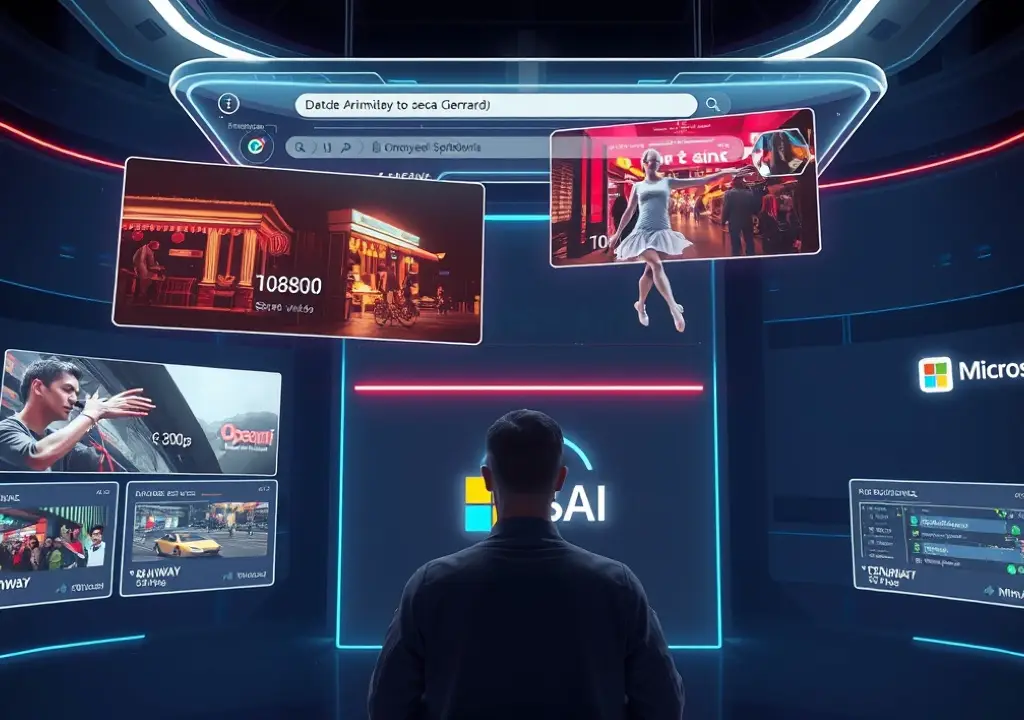Sora, an AI video generation tool developed by the startup OpenAI in 2021, has officially exited its research phase and been launched for public use under a new name: Sora Turbo.
The public release has sparked massive online attention, leading to a temporary pause in new account registrations after the company experienced an overwhelming surge in user traffic.
Sora works by taking text instructions and turning them into video content, much like ChatGPT does for written content. Unlike conventional AI systems that generate only text, Sora can create visually rich videos directly from user prompts.
OpenAI’s announcement on December 9 stated that Sora Turbo is a major upgrade from the original Sora. It delivers quicker video rendering, improved video quality, and new tools that let users clip scenes, modify specific elements within a video, and retain the rest of the footage.
What is Sora Turbo exactly and how is it impacting video production?
How does Sora Turbo work?
Sora and similar AI video tools can replicate what professional filmmakers do—using top-tier gear—but within seconds.
Users can input prompts not only about the content, but also details like camera type, lens specs, lighting design, mood, and overall composition.
Here’s an example of a prompt with such details:
“Film an emotional night-time portrait of a street vendor using an 85mm medium-telephoto lens. Use the warm glow from their food stall and blend it with cooler city lights. Focus closely on their hands preparing food, with their proud expression subtly balanced in frame.”
How advanced is Sora Turbo?
It’s impressive, but not flawless.
Users input prompts for the kind of video they want, and Sora generates it. However, limitations exist. At present, videos are capped at 1080p resolution, 30fps, and a maximum of 20 seconds.
Take for instance a 20-second video made by Emi Kusana, lead singer of Satellite Young, inspired by 1980s J-pop and Takenoko-zoku style. Though short, Sora’s Storyboard feature lets users link multiple clips to form longer sequences.
Yet some errors persist. In Kusana’s video, a dancer’s neck rotates 180 degrees—an impossible human action—and the routine continues.
In another video posted by OpenAI’s CEO Sam Altman, a woman stirs food, but her spoon vanishes mid-action. The company acknowledged such glitches still need work.
How is the industry responding to Sora Turbo?
Some media professionals and directors are concerned about how Sora might disrupt the film production process.
One Hollywood insider told Al Jazeera anonymously in March: “It’s not a threat to filmmaking, but to how we currently produce films.”
He compared it to earlier changes in post-production workflows, when editing moved from expensive studios to affordable laptops.
“Many businesses vanished in that shift, while others gained access to affordable editing without hefty studio costs,” he said.
Is Sora the only AI tool for generating videos?
No. The AI video tool market is expanding quickly.
What distinguishes Sora is its exceptional visual fidelity and lifelike animation.
Sora Turbo also includes advanced editing options commonly found in professional software like Adobe Premiere Pro and Final Cut Pro.
Additionally, OpenAI enjoys significant financial backing from Microsoft, which has invested close to $14 billion—most recently adding $10 billion in January. CNBC reported in October that OpenAI also holds a $4 billion revolving credit line, pushing its liquid assets above $10 billion—resources most competitors lack.
What other AI video tools exist?
Several other leading platforms include:
Runway Gen 3
Founded in 2018, Runway has secured $237 million in funding and is in talks to raise another $450 million, according to The Information.
The free version generates 10-second videos at 720p and 30fps. Paid plans offer 1440p or 2160p resolution.
Runway appeals primarily to marketers and social media users needing quick short-form content.
One issue with long-form AI video is ensuring consistent quality across multiple clips, which often requires users to refine prompts interactively.
Kling AI
Kling, owned by Chinese tech giant Kuaishou (also known as Kwai), launched in June 2024 to rival tools like Sora.
It can create videos up to two minutes long in 1080p resolution at 30fps.
MiniMax
MiniMax, backed by Alibaba, was founded in 2021 by former SenseTime staff.
Its latest funding round raised $600 million in March.
MiniMax produces six-second clips at 720p and 25fps.

